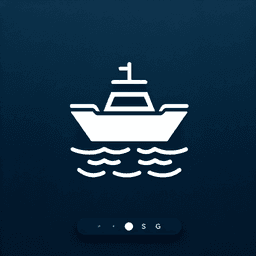
Transom: Definition, Uses, and Examples in Architecture and Design
January 16, 2025
Transom
The term "transom" refers to the flat or slightly curved surface forming the stern of a vessel. It is a critical component in boat design, particularly in sailing and motorized vessels, as it provides structural integrity and influences the hydrodynamics of the boat.
In maritime contexts, the transom is often where the vessel's name and port of registry are displayed. It also serves as a mounting point for outboard motors and other equipment, such as swim platforms or fishing gear. The design and angle of the transom can affect the boat's performance, including its speed, stability, and handling characteristics.
Transoms can be constructed from various materials, including wood, fiberglass, and metal, each offering different benefits in terms of durability, weight, and maintenance. The choice of material often depends on the type of vessel and its intended use.
For sailors, understanding the role of the transom is essential for optimizing the performance and safety of their vessel. Proper maintenance of the transom is crucial, as it is exposed to harsh marine environments and can be susceptible to damage from water ingress or impact.
Understanding the Transom in Maritime Context
The transom is a crucial component in the structure of a boat, serving as the flat, vertical surface at the stern, or rear, of the vessel. It provides structural integrity and acts as a mounting point for the engine and other equipment. This part of the boat is essential for maintaining the vessel's shape and ensuring it can withstand the forces of the water.
People Also Ask
What is the purpose of a transom on a boat?
The transom serves multiple purposes on a boat. Primarily, it acts as a vertical reinforcement that strengthens the stern. It is also the section where outboard motors are typically mounted, providing a stable and secure attachment point. Additionally, the transom helps in shaping the boat's wake and can include features like swim platforms or ladders for easy water access.
Where is the transom on a vessel?
The transom is located at the back (stern) of the boat. It is the cross-section of the stern where you attach an outboard motor. Depending on the type of boat, the transom may vary in size and shape, but it consistently serves as a critical structural element.
Why is it called a transom?
The term "transom" originates from early carpentry, where it referred to the beam above a door. When windows were added above this beam, they were called "transom windows." In nautical terms, the transom evolved to describe the flat surface at the stern of a boat, which "crosses" the back of the vessel.
What is the difference between stern and transom?
The stern refers to the entire back end of the boat, while the transom is specifically the flat, vertical surface at the stern. The transom is part of the stern structure and is crucial for mounting engines and other equipment.




